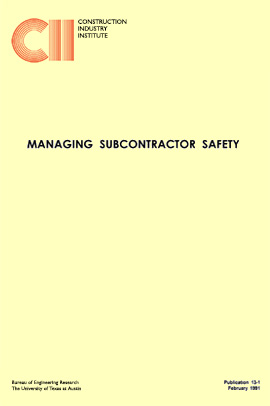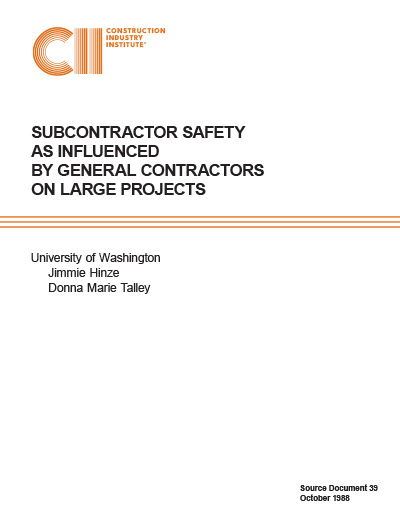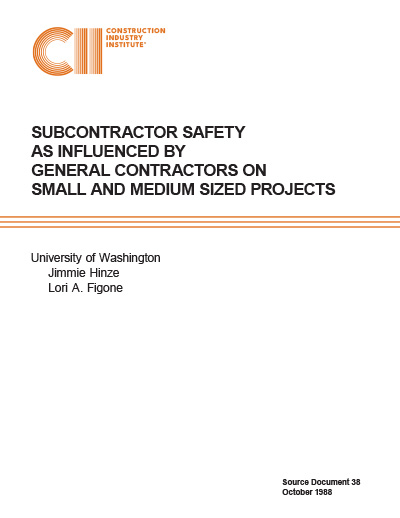
Managing Subcontractor Safety
Task force research shows that, where subcontractor safety is concerned, the role of project managers is very important. On large and small projects alike, emphasizing safety and providing quality coordination have a favorable impact on the safety of subcontractors. On small projects, sub-contractor safety performance also was influenced by the quality of the project management existent on the job and the degree to which workers were dealt with in a humanitarian or personal manner.
The long-term impact of providing a job environment that improves overall job safety is that construction costs will decline. The improved safety records of all parties involved will directly increase job profits. Subcontractors will be better able to perform their work when coordination is thorough and clear. Thus, the subcontractors will be able to bid lower on subsequent projects. As this study has shown, the number of job-related injuries will decrease. General contractors must act responsibly in project management or safety performance will be adversely affected.
Since the general contractors have a significant influence on their sub-contractors, owners too will have an influence on the safety performances of the general contractor and subcontractor. Thus, it can be inferred from the results of this study that owners also play a major role in construction safety.
For small projects, five key factors under the general contractor’s control were found to significantly influence subcontractor safety: (RS13-1, p. 4)
- Effective project management (well planned, good communications, on schedule)
- Effective job coordination (between different entities on the job site, clear roles and responsibilities)
- Managerial emphasis on job safety (communication: relative matters communicated to affected parties from top deck on down, clearly and consistently)
- Strong interpersonal skills amongst supervisors
- Safe work environment (enforce safety standard, good housekeeping/maintenance)
For large projects, two key factors under the general contractor’s control were found to significantly influence subcontractor safety: (RS13-1, p. 7)
- Managerial emphasis on job safety (e.g., through communication, staffing, monitoring, safety meetings, enforcement of standards and regulations, incident investigation, and linkage to compensation bonuses)
- Effective job coordination (i.e., between different entities on the job site)
RS13-1, Guidelines for Managing Subcontractor Safety on Construction Projects
Contains generic safety program guidelines that Contractors can use both to shape their own activities in respect of subcontractor safety, and to include in subcontracts to shape safety program requirements for their subcontractors. Some of the topics covered include: (RS13-1, Appendix A)
- For Contractors – selection of subcontractors; scope of work safety requirements; safety orientations; and safety performance recordkeeping and exchange
- For Subcontractors – fundamental elements of a basic safety program that may need to be in place and provided as part of a bid response
- Safety Program Guidelines for Contractors and Subcontractors – contains basic and generic informational recommendations and requirements of an effective safety program for either Contractors or Subcontractors. Some of the topics covered include: (RS13-1, Appendix B)
- New employee orientation
- Toolbox / safety meetings
- Work Permits
- Personal Protective Equipment (PPE)
- Project Emergency Plan
- Inspections



